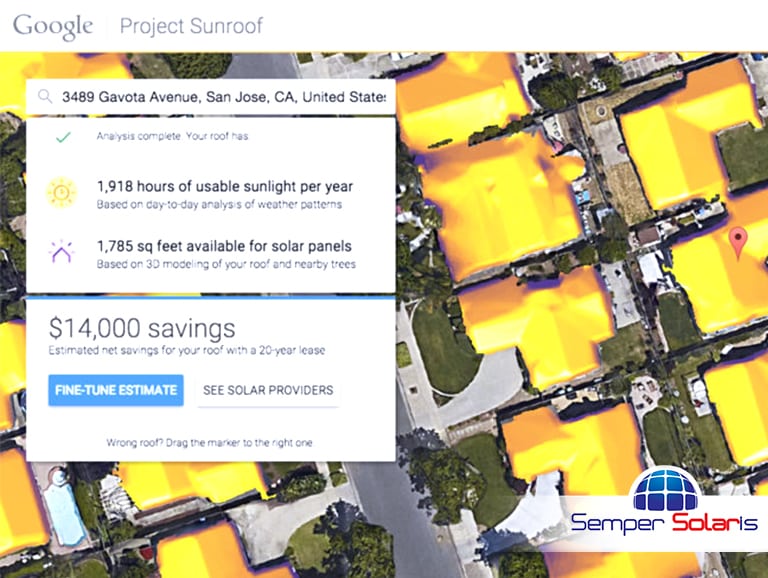




If you are thinking about going solar at home, but you are having doubts about the payoff, Google can help you make an informed decision. Combining the abundance of their satellite imagery and sophisticated algorithms, Google is now offering a new service that will provide you immediate insight into what you could expect in terms of savings with rooftop solar.
This August the company rolled out Project Sunroof, a service that “maps the planet’s solar potential” by analyzing the high-resolution aerial photos of Google Earth. A three-dimensional model of your home is created and then the artificial intelligence software evaluates how much sun exposure the panels would have and how much savings that investment would make you. Joel Conkling of Google says that people constantly use Google to explore solar, but allowing them to test how much they would gain by going solar is so much more helpful.
For now, the availability of service is limited to the Bay Area in San Francisco, central Cali and greater Boston. It was developed by Carl Elkin, a rooftop solar owner who lives in Cambridge and works for Google. The project was developed during his “20 percent time” – that time allowance Google gives their employees to work on their own independent projects.
Elkin has installed solar panels on the roof of his home in Massachusetts. He says his drive was for people to understand that going solar is a very good home investment. Google and the project author consider this web application will promote solar panels and encourage more people to make the green change.
They add that the timing for the service release is just right, with the incentives and the cost of installing solar being lower than ever. Google’s algorithms are very intricate and they emulate the neuron web in the human brain to separate your roof from the trees and shadows nearby. The technology is actually the same like the one used for face recognition on Facebook and instant translation on Skype.
Project Sunroof includes simulation of shadows that normally shade your roof and it also takes into account the weather patterns in the area. Another variable that factors in is the typical local utility rates or you can enter the amount of your monthly utility bills for an even more accurate estimate.
This project isn’t just Elkin’s brainchild or his personal crusade. It’s a natural development that fits into Google’s long-known support of solar and renewables. Their data centers are already solar-powered and they have invested in home solar projects. However, we shouldn’t expect this is mere beneficence. Google is all about marketing – the service will soon include referrals to solar companies in your area and charge those providers fees for doing so. Conkling explains that they want to bring people closer to understanding the potential of solar electricity, but they can also make some money off of that.